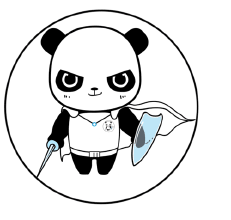A sneak peak at the YouTube VR app for Daydream platform Edited by brian_rodrigues at 2016-05-20 12:28

Google has been slowly building virtual reality-focused functionality into the YouTube app over the past year with support for 360-degree video formats, stereoscopic video, 3D audio and general Google Cardboard support. Today, YouTube, the “world’s largest collection of VR videos,” teased a complete VR-centered design that will be coming to Daydream-enabled phones. The company also announced in their blog post that they will be working with content partners like NBA, BuzzFeed and Tastemade to “explore new ways of storytelling in virtual environments that will provide valuable lessons about the way creators and viewers interact with VR video". 
YouTube also announced that its bringing its Jump VR camera program to its YouTube Spaces in LA and NYC and plans to bring to all of its global locations soon to help content creators start working in virtual reality. Whereas Google Cardboard was mobile-first in that you selected and navigated Cardboard-compatible apps up to the point of viewing the content at which point you’d slot the phone into your headset and hold the viewer up to your face, Daydream is designed for navigation within VR and thus this version of YouTube had to be designed from the ground up. 
Details are mostly scant on the YouTube VR app itself, but it will apparently be full-featured and offer users access to playlists, voice search and discovery. It will be interesting to see how things like text-entry work on the app or whether the company will largely shift attention towards voice search across not just the YouTube app but the entire Daydream interface. The reference design controller that Google has shown off is capable of selecting items onscreen like a laser pointer so text entry could be relatively straightforward, albeit cumbersome. 
Based on the lone screenshot that YouTube generously showed off, it looks like the app allows interface navigation from within video playback on the pause screen which is quite interesting and offers suggestions of how user experience on Daydream may differ from the navigation frameworks of other mobile VR headsets like Gear VR. Source | |
|
|
|
|
Its Cool!
| |
Rudraksh replied at 2016-05-20 12:28 In future we do not have to visit places to be there... VR would do it all for us... We could even attend the Meizu launch events from the comforts of our home thanks to VR... | |
brian_rodrigues replied at 2016-05-20 12:31 I thought so! I wish Meizu tries to make future events in VR like Google did for I/O 2016 | |
|
|
|
Rudraksh replied at 2016-05-20 12:33 It is very much possible considering Meizu's plans to enter the VR market... We could be watching the PRO7 launch live on the Meizu VR headset... | |
|
|
|
|
Its amazing
| |
|
|
|











































5